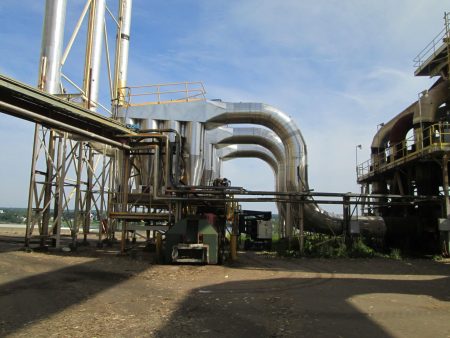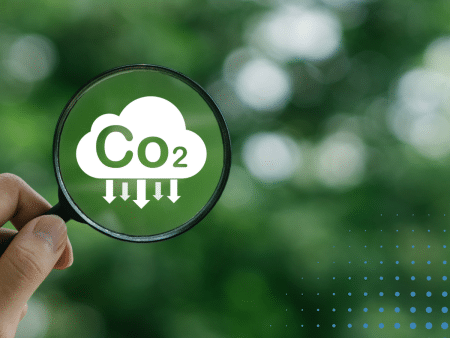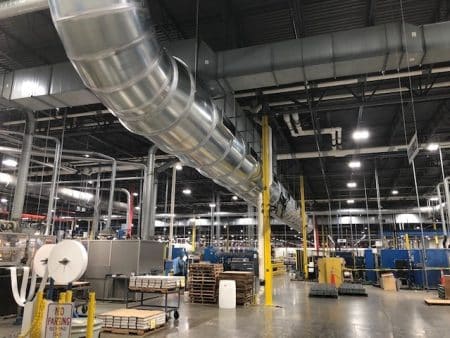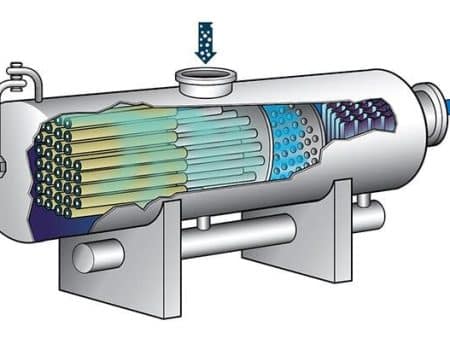Nitrogen oxides (NOx) are a group of gases that are released into the atmosphere from a variety of sources, including power plants, industrial facilities, and vehicles. NOx can cause a number of environmental and health problems, including smog, acid rain, and respiratory problems.
Wet scrubbers are one of the most common technologies used to remove NOx from industrial emissions. Wet scrubbers work by spraying a liquid solution into a gas stream, which causes the NOx to dissolve in the liquid. The liquid solution is then treated to remove the NOx.
What are Wet Scrubbers?
Wet scrubbers are devices or industrial equipment used for air pollution control. They use a liquid solution to remove pollutants from a gas stream to help remove harmful emissions. The liquid solution is typically sprayed into the gas stream, which causes the pollutants to dissolve in the liquid. The liquid solution is then treated to extract the pollutants.
Wet scrubbers can help remove a variety of pollutants from industrial emissions, including:
- Particulate matter (PM)
- Sulfur dioxide (SO2)
- Nitrogen oxides (NOx)
- Hydrogen chloride (HCl)
- Fluoride (F)
How Do Wet Scrubbers Remove NOx?
There are two main ways that wet scrubbers remove NOx:
Absorption
NOx gases dissolve in the liquid solution. The solubility of NOx in water is affected by a number of factors, including the pH of the solution and the temperature of the gas stream.
Chemical reaction
NOx gases can react with certain chemicals in the liquid solution to form insoluble compounds that can be removed from the gas stream.
The type of liquid solution used in a wet scrubber for NOx removal depends on the specific application. Some common liquid solutions include:
- Water: Water is the most common liquid solution used in wet scrubbers. It is relatively inexpensive and effective at dissolving NOx gases.
- Alkaline solutions: Alkaline solutions, such as sodium hydroxide (NaOH) or lime (CaO), may be used to increase the pH of the liquid solution. This can increase the solubility of NOx gases in the solution.
- Acidic solutions: Acidic solutions, such as nitric acid (HNO3), may be used to decrease the pH of the liquid solution. This can promote the formation of insoluble NOx compounds that can be removed from the gas stream.
- Oxidizing solutions: Oxidizing solutions, such as hydrogen peroxide (H2O2), may be used to oxidize NOx gases to NO3- ions, which are more soluble in water.
The specific design of a wet scrubber for NOx removal will depend on the type of liquid solution used, the gas flow rate, the NOx concentration in the gas stream, and the desired removal efficiency. However, all wet scrubbers operate on the same basic principle: the liquid solution is sprayed into the gas stream, which causes the NOx gases to dissolve in the liquid. The liquid solution is then treated to remove the NOx gases.
Types of Wet Scrubbers for NOx Removal
There are several types of wet scrubbers that are often used to remove NOx from industrial emissions, each with different benefits, drawbacks, and appropriate applications. Examples of common types of wet scrubbers are written about below with information describing each one and how they work:
- Spray tower scrubbers: Spray tower scrubbers are low-energy scrubbers that use nozzles to spray the liquid solution into the gas stream. Spray tower scrubbers are typically used for applications where the gas stream is relatively clean and the removal efficiency requirements are not as stringent.
- Packed bed scrubbers: Packed bed scrubbers are filled with a packing material, such as Raschig rings or Pall rings. The liquid solution is sprayed over the packing material, and the NOx gases dissolve in the liquid as it flows through the packing material. Packed bed scrubbers are typically used for applications where the gas stream is heavily polluted and the removal efficiency requirements are high.
- Venturi scrubbers: Venturi scrubbers are high-energy scrubbers that use a high-pressure gas stream to atomize the liquid solution. This creates a fine mist of droplets that can effectively capture pollutants from the gas stream.
Learn more about NOx Control Wet Scrubbers
Applications of Wet Scrubbers for NOx Removal
Wet scrubbers are used in a variety of industrial applications to remove NOx from emissions. Some common applications include:
- 发电厂
- Industrial boilers
- Cement kilns
- Incinerators
- Nitric acid manufacturing
-
Metal finishing operations
Benefits and Drawbacks of Wet Scrubbers for NOx Removal
Wet scrubbers have several benefits regarding their use for NOx removal, including:
- They are effective at removing NOx from a variety of different gas streams.
- They are relatively inexpensive to install and operate.
-
They may be used to remove other pollutants from industrial emissions, such as PM and SO2.
However, as with most solutions, there are also some drawbacks that should be considered before deciding how you would like to proceed in helping reduce or eliminate NOx emissions. Some of these include:
- They produce a wastewater stream that must be treated and disposed of properly.
- They can be corrosive, so they must be made of durable materials.
-
They can be bulky and require a significant amount of space.
Wet scrubbers are a versatile and effective technology for removing NOx from industrial emissions. They are used in a variety of different industries and can be customized to meet the specific needs of each application. However, if you need guidance on what the right solution is for you to eliminate NOx emissions, contact CECO Environmental today.
Citations:
- Makansi, J. M. (2000). NOx control technologies for stationary sources. Catalysis Today, 53(1), 233-256.
- Li, J., Wang, Y., & Zhang, L. (2020). Research progress of wet scrubbers for NOx removal: A review. Environmental Science and Ecotechnology, 1(1), 1-10.
- Valipour, M., & Shayesteh, H. (2019). Wet scrubbers for NOx removal: A review. Journal of the Air & Waste Management Association, 69(11), 1359-1375.



